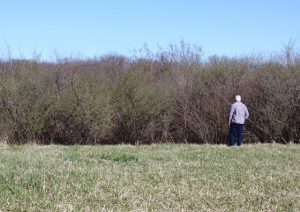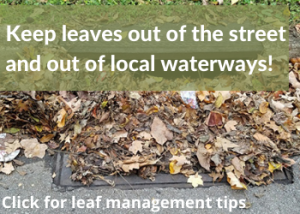By Mary Jo Adams, EAC volunteer
Understanding how the proliferation of invasive species can influence the health of a watershed comes down to this: water quality declines when the diversity of species, integral to the overall ecological health of the landscape, is diminished.
Watersheds have many components. The plants and animals, large and small, that inhabit the landscape provide significant ecological services.
A plant or animal can be native or non-native (sometimes called “alien”). The term “native” usually refers to those species that naturally occur in any given area prior to European settlement in this country. Non-native or alien species were introduced into an area where they did not previously exist, and would not normally occur.
According to the United States Department of Agriculture, an invasive species is:
- non-native (or alien) to the ecosystem under consideration AND
- introduction causes, or is likely to cause, economic harm, environmental harm or harm to human health.
Invasive organisms crowd out and out-compete other species, completely eradicated or greatly reducing native species.
The most common invasive plants impacting watersheds in McLean County are:
- Multiflora Rose (Rosa multiflora)
- Garlic Mustard (Alliaria petiolata)
- Japanese Honeysuckle (Loncerica japonica)
- Autumn Olive (Elaeagnus umbellate)
- Cut-leaved Teasel (Dipsacus laciniatus)
For example, the water quality in the Mackinaw River Watershed is negatively impacted by increased runoff and soil instability from a loss of native ground cover and increased invasive vegetation.
Helpful Links:





